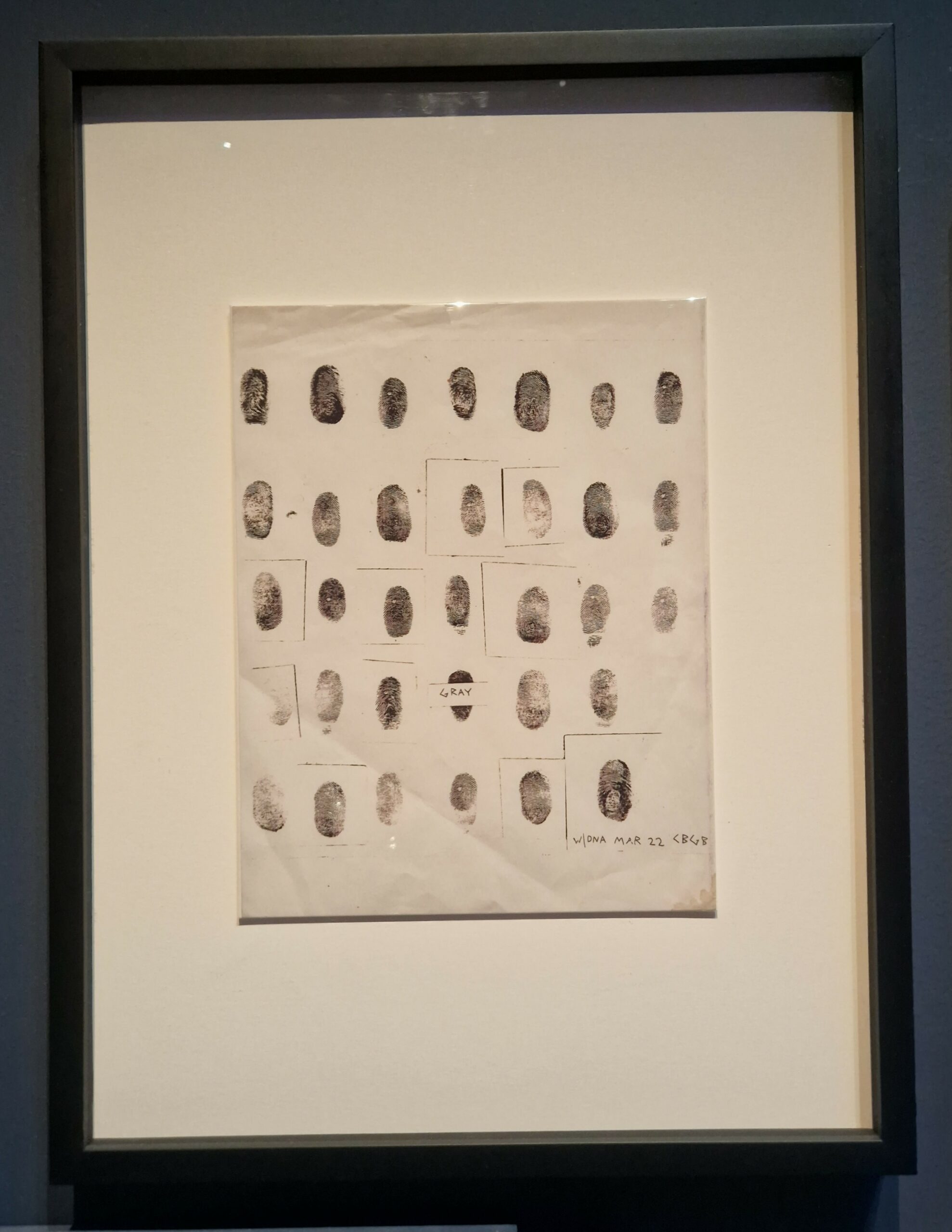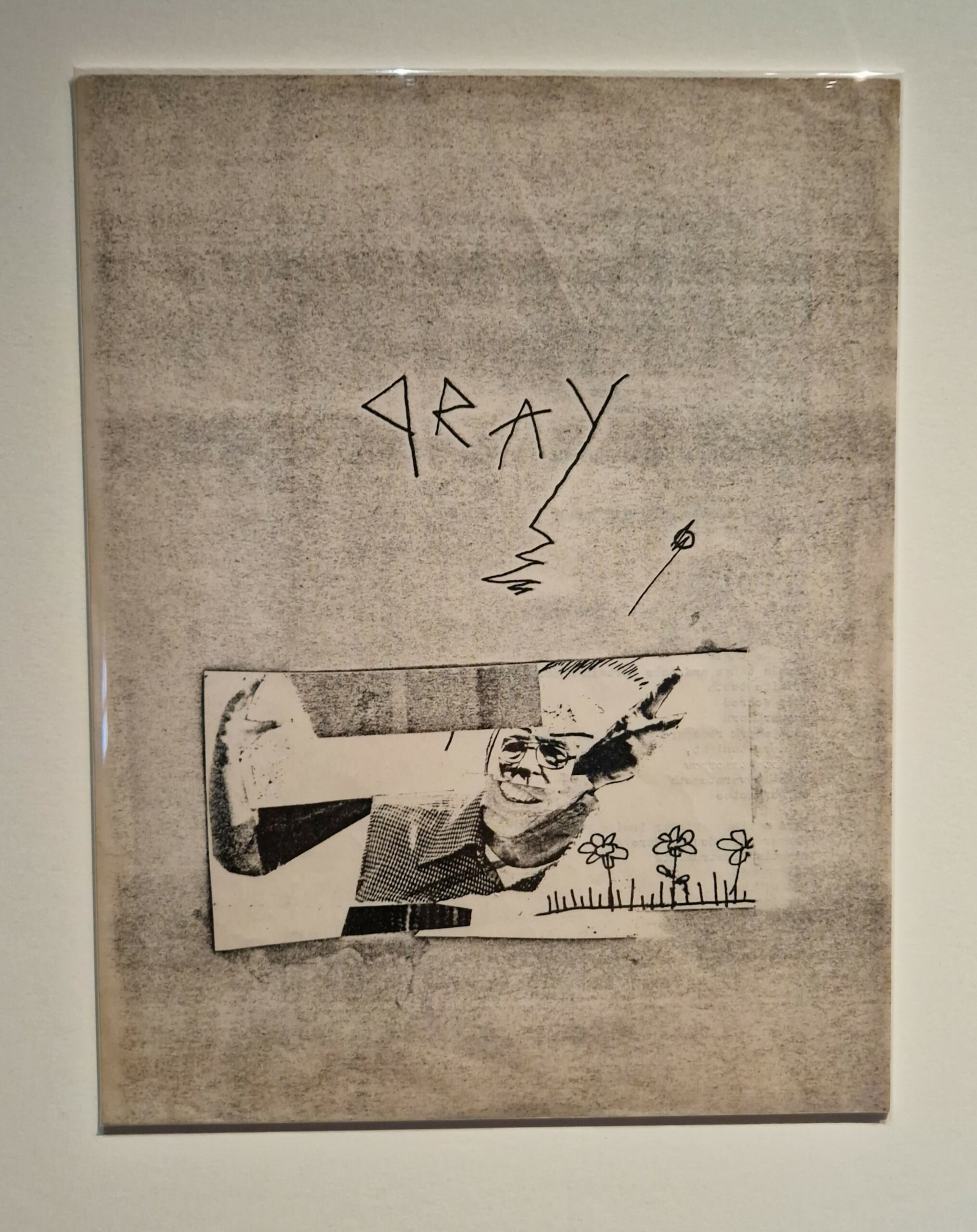Paris – summer 2023 is probably the best time and place to be in for any Basquiat fan, this year, many exhibition are getting dedicated for the Haitian-American virtuoso, not only that, but also for anyone interested in 80s Hip-Hop, as well as the NYC no-wave era of the late 70s – early 80s. The most notable ones are Basquiat X Warhol, À Quatre Mains at the Louis Vuitton Foundation. And Basquiat Soundtracks at La Philharmonie de Paris, after visiting both of these, the later was definitely the most interesting since it was focused on a much less known side of Basquiat; Music, and by music we mean his early & late influences, musicians he portrayed, his musical projects, his productions etc.
Basquiat and Jazz
You can instantly tell that Basquiat grew up in a house where Charlie Parker music was playing loud, rocked by his father’s records from an early age. Growing up, the artist was eager to learn and tried several instruments such as the clarinet and the synthesizer But his true love for music is more evident in his paintings, where he pays tribute to this passion with small details and various references to the revolutionary artists of his time. For example, his painting “Now’s The Time” (image on the right) refers to a song by Charlie Parker

—
The name Dizzie Gillespie appears on his painting ‘HORN PLAYERS’ (1983) (left picture), Louis Armstrong appears on ‘King of the Zulus’ (1984/1985) (right picture).

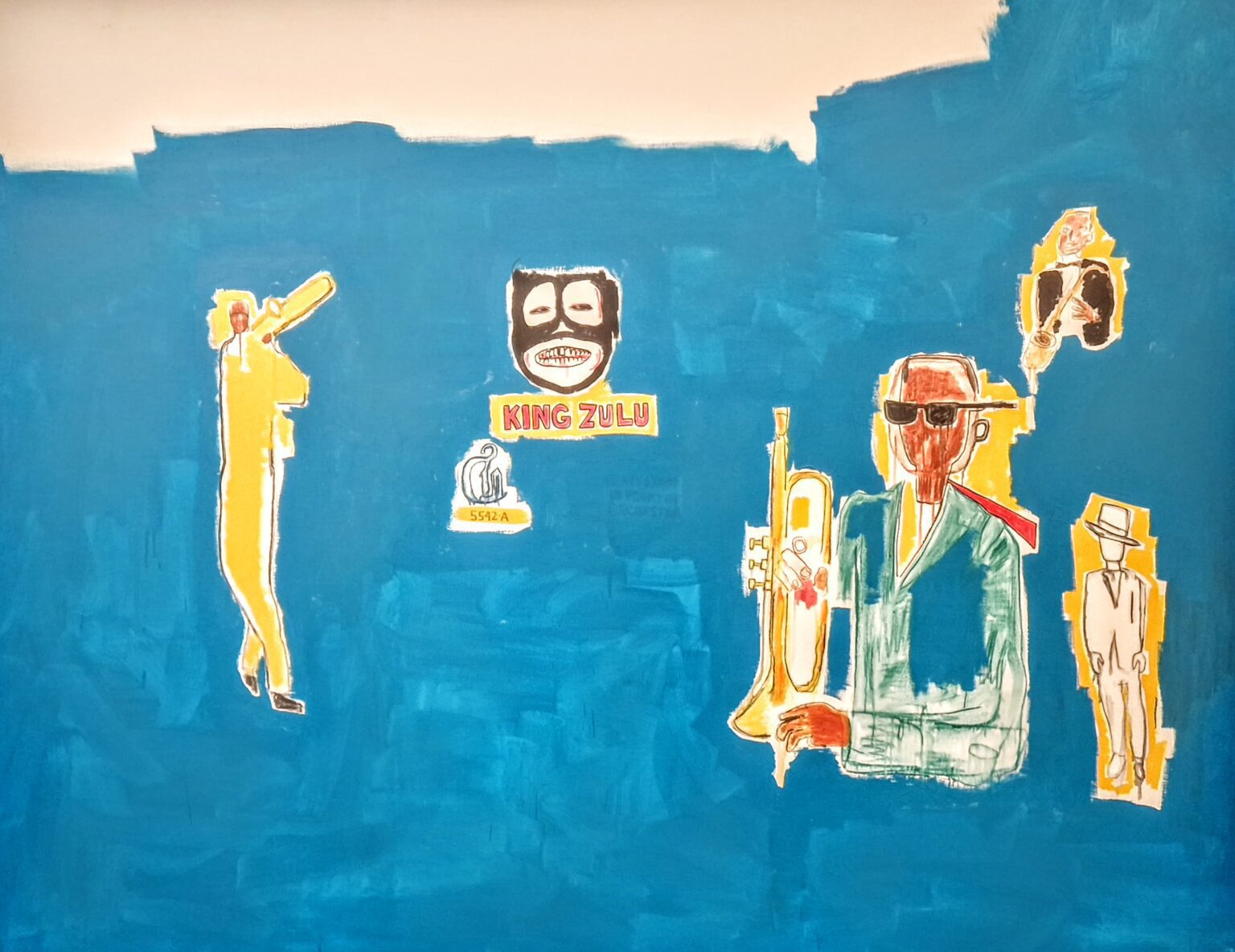
Basquiat and Hip-Hop
Hip-Hop was born in 1973, around that time, young Jean-Michel and schoolmate Al Diaz began spray-painting graffiti on buildings in the lower side of Manhattan. Under the pseudonym SAMO, as an abbreviation for “Same old shit.”.
“SAMO (for “same old”) marked the witty sayings of a precocious and worldly teenage mind that, even at that early juncture, saw the world in shades of gray, fearlessly juxtaposing corporate commodity structures with the social milieu he wished to enter: the predominantly white art world.”
— Franklin Sirmans, In the Cipher: Basquiat and Hip Hop Culture

—
Jean-Michel Basquiat rose to prominence as a street artist writing on the walls of Lower Manhattan as SAMO. Basquiat befriended Hip-Hop artists Rammellzee and Toxic, the trio are depicted on many Basquiat’s paintings, notably Hollywood Africans (1983).
Basquiat later produced “Beat Bop”, a test pressing record, It became a showdown between Rammellzee and K-Rob. Basquiat heard K-Rob rapping at an event and invited him to a recording session with Rammellzee. This resulted in a ten-minute track produced and arranged by Basquiat.
The track and featured in the hip-hop documentary film Style Wars (1983).

—
The exhibition presented an original copy of “Beat Bop”:

(Very) Related article: Exposition RAMMELLZEE, Palais de Tokyo 2025
Basquiat and No-Wave
As chaotic as his art is, Basquiat happened to live in NYC during the most chaotic time in modern NYC. With the city on the brink of bankruptcy, the financial crisis that threatened New York in the 1970s plunged the city into disorder and chaos, resulting in thousands of layoffs, budget cuts, increased poverty and crime, all this pushed for the rebirth of a post punk scene, known as ‘No Wave’.
“No wave is not a clearly definable musical genre with consistent features, but it generally was characterized by a rejection of the recycling of traditional rock aesthetics”
“Downtown 81” is the perfect illustration of this era, the movie is starred by Basquiat himself, featuring many notable No-Wave acts like James Chance, DNA, The Lounge Lizards & others. A must watch.
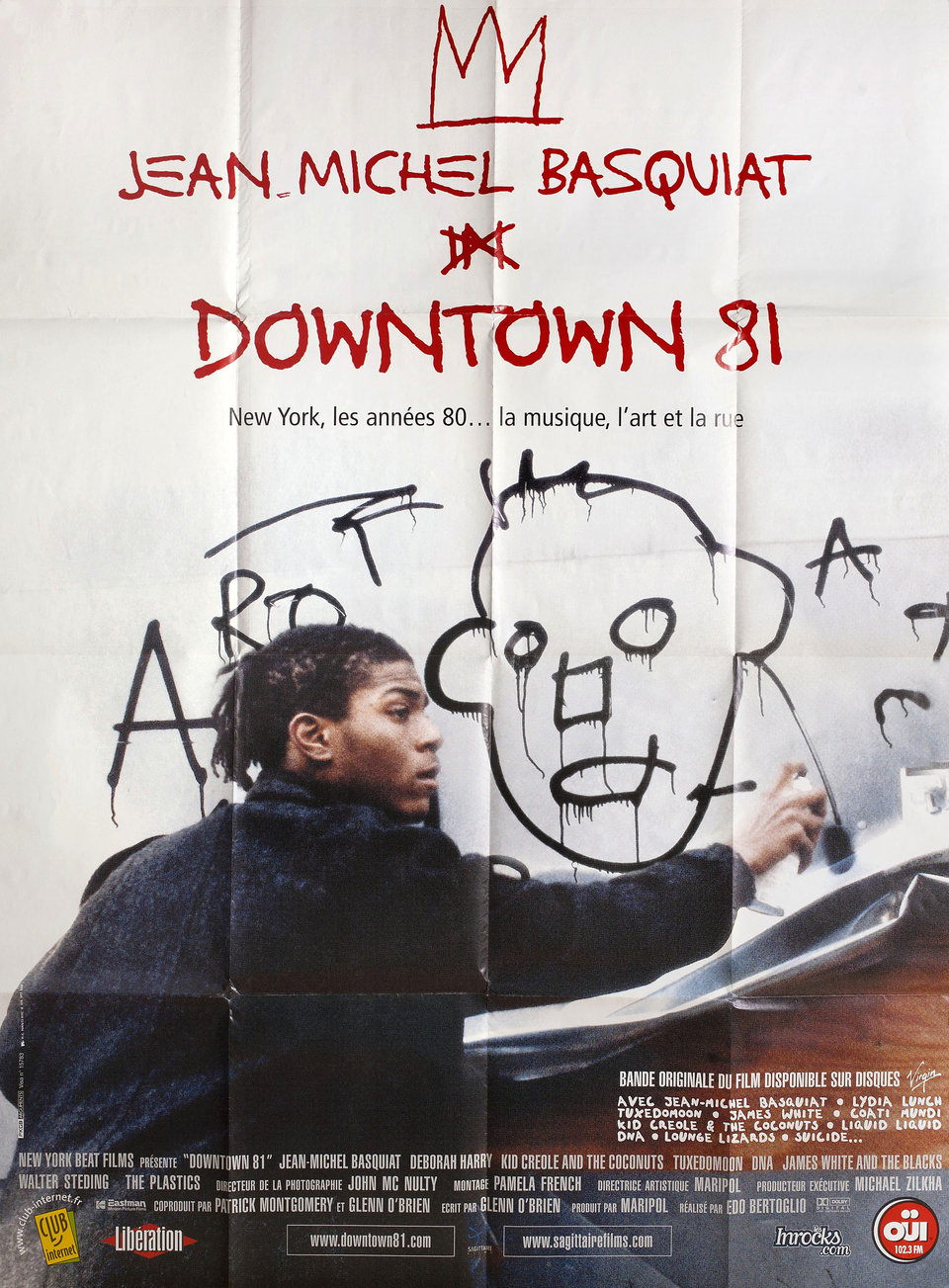
—
No-Wave Era paintings/posters:
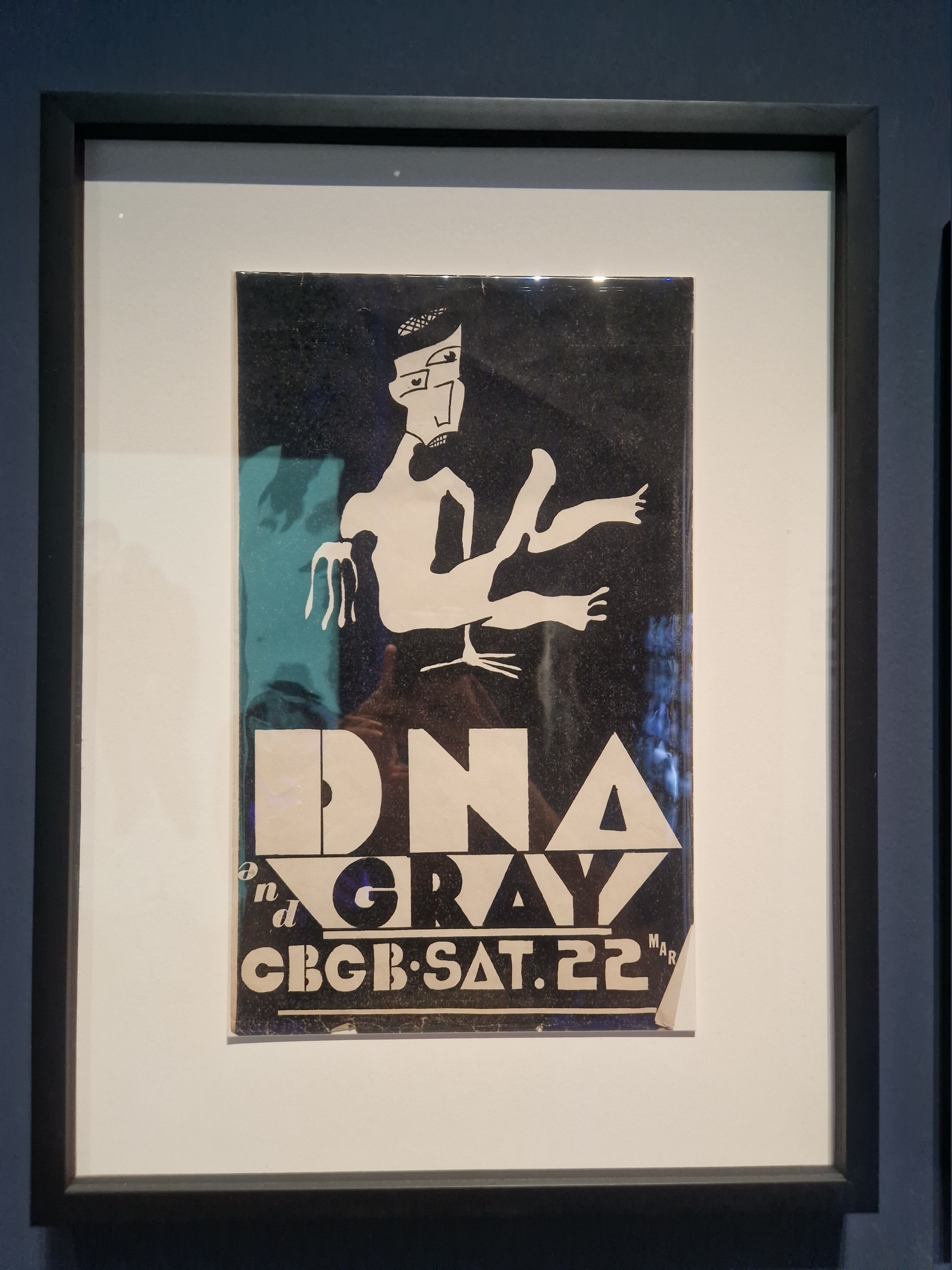

Going a little deeper, Gray
It was also around this time (1979) that Basquiat formed his own experimental band along with Michael Holman and filmmaker Vincent Gallo. The group was influenced by the sonic experimentation of their contemporaries in this no-wave scene.
